17 February 2025
There are some sights in the world that completely take your breath away, and one such marvel is the Taj Mahal. Nestled gracefully on the banks of the Yamuna River in Agra, India, the Taj Mahal stands as a timeless symbol of eternal love. But it's not just your average love story wrapped up in a grand piece of architecture. Oh no, the Taj Mahal pulls you in like a whispered secret, its beauty slowly revealing itself like the layers of a precious pearl.
Are you ready to dive into the world of this mystical masterpiece? Let’s peel back the layers and uncover why the Taj Mahal continues to captivate millions of visitors from around the globe.
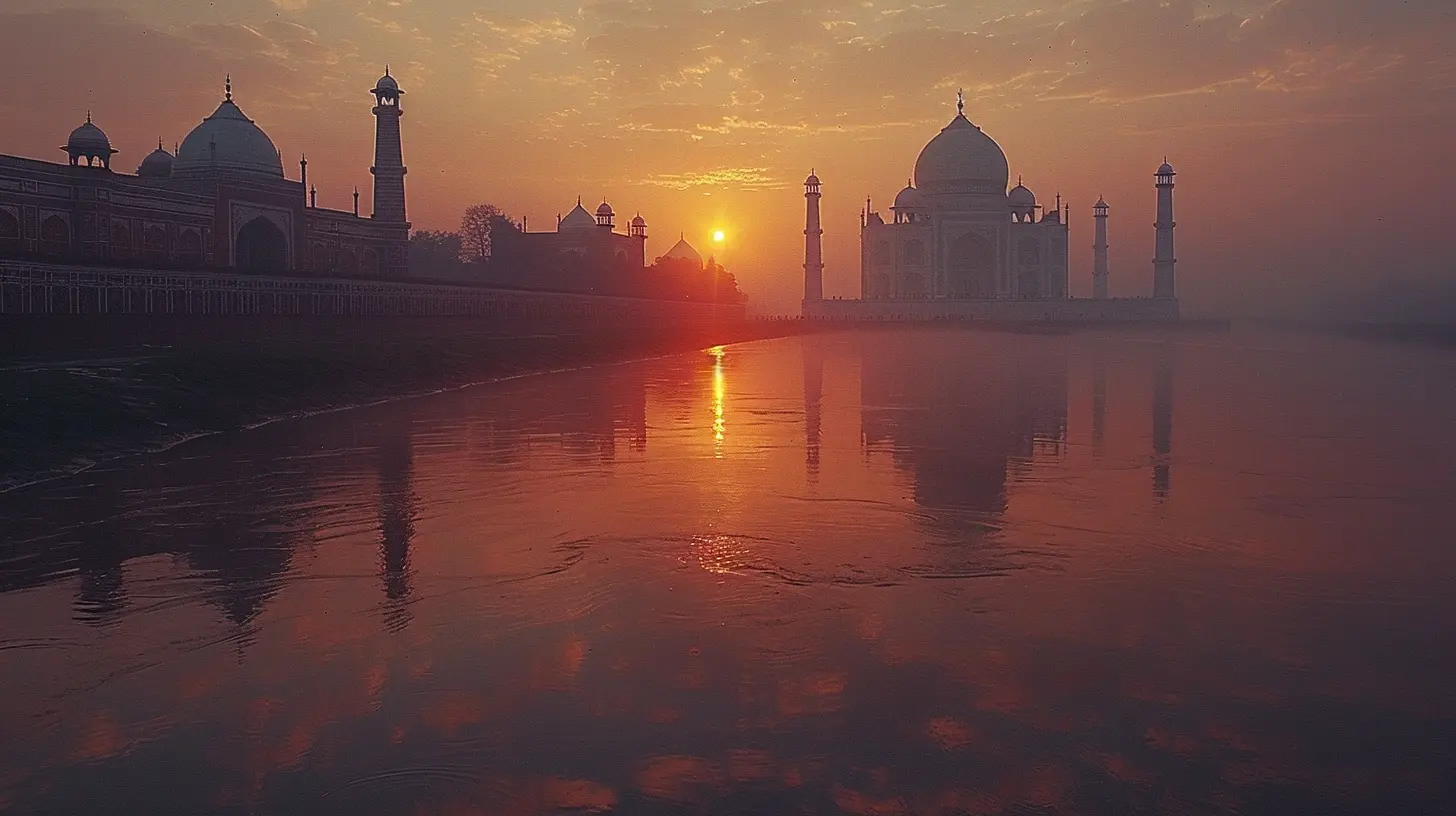
A Love Story for the Ages
What makes a monument more than just bricks and mortar? Emotion. And the Taj Mahal is teeming with it.The Taj Mahal was built by Mughal Emperor Shah Jahan in memory of his beloved wife, Mumtaz Mahal. Their love was the kind that poets write about—a love so deep that when Mumtaz sadly passed away during childbirth in 1631, Shah Jahan couldn’t bear to let it fade into oblivion. Instead, he decided to immortalize their love in the form of a monument so grand that the world would never forget.
Taking over 20 years to complete—with construction starting in 1632 and finishing around 1653—the Taj Mahal is not just a mausoleum but a symbol of love, loss, and eternal remembrance. You know when they say love can move mountains? Well, in this case, it led to the creation of one of the most stunning structures on Earth.
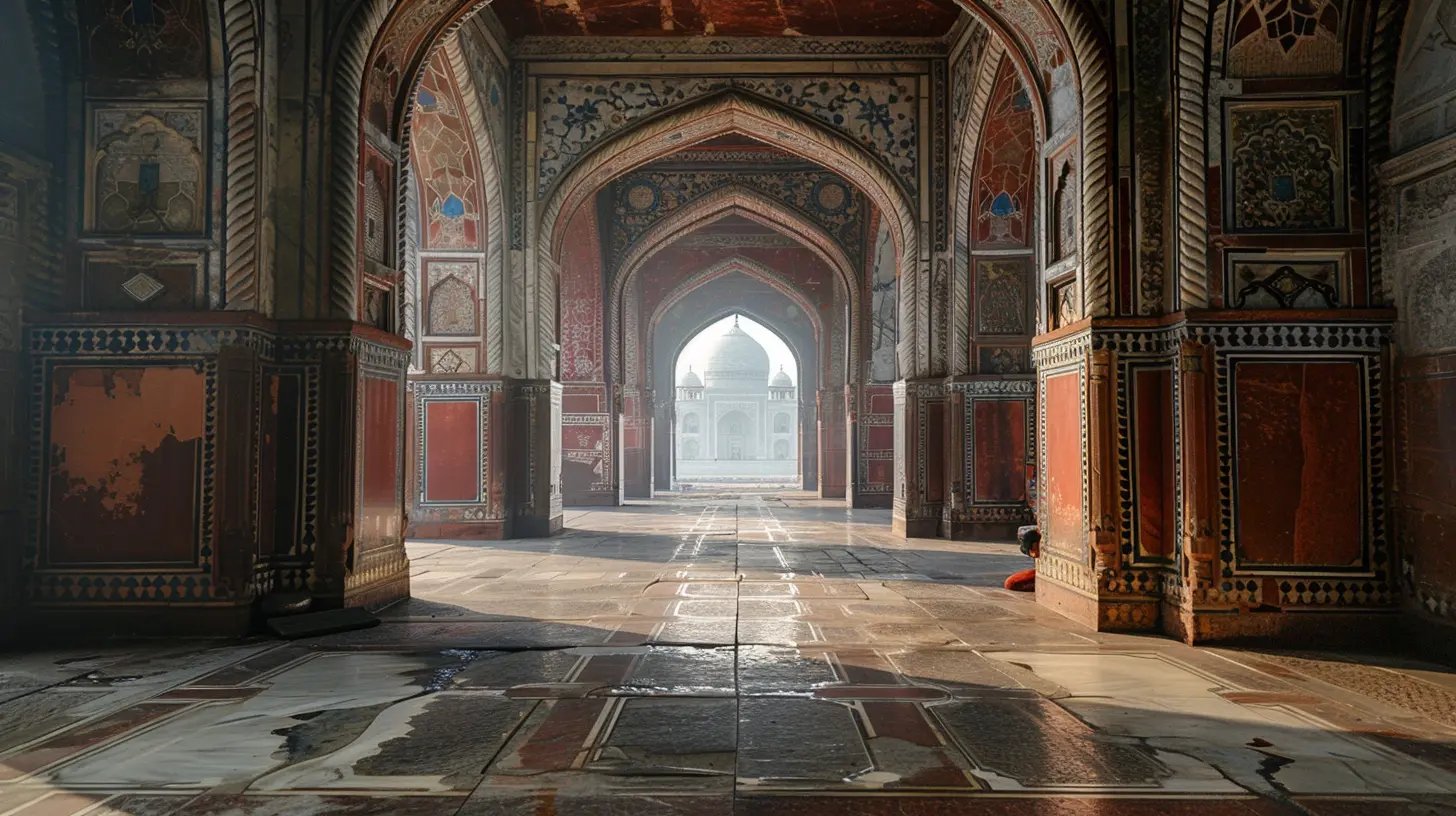
The Architectural Majesty
How exactly do you describe a building that seems to float between earth and sky?The Taj Mahal is a sublime blend of Persian, Islamic, and Indian architectural styles. The entire structure rests on a vast marble platform, and its centerpiece—an onion-shaped dome—rises delicately into the sky. Flanking the dome are four equally elegant minarets, standing like protective sentinels.
What really sets the Taj Mahal apart, though, is its pristine white marble facade. But here’s the catch: It's not just white! Under the soft morning light, the marble glows a pinkish hue, while under the afternoon sun, it turns a dazzling white. And when night falls, especially under the moonlight, the Taj Mahal seems to shimmer like a dream, cast in an ethereal blue glow. It's like the monument has its own mood ring, switching colors based on the time of day.
The Intricate Details: More Than Meets the Eye
The beauty of the Taj Mahal is all in the details—seriously, it's like diving into a Where’s Waldo of artistic genius. The monument is adorned with intricate floral patterns, inlaid with semi-precious stones like turquoise, lapis lazuli, and jade. These aren’t just random decorations either; they tell stories and symbolize the paradise that Shah Jahan hoped to reunite with Mumtaz Mahal in.While the marble might take center stage, its calligraphy steals the show. If you look closely (and I mean really closely), you’ll notice that Quranic verses are inscribed in flowing black script all over the entrances. The elegant calligraphy seems to grow larger the higher it goes, creating an optical illusion that makes the text appear consistent from ground level. Talk about attention to detail, right?
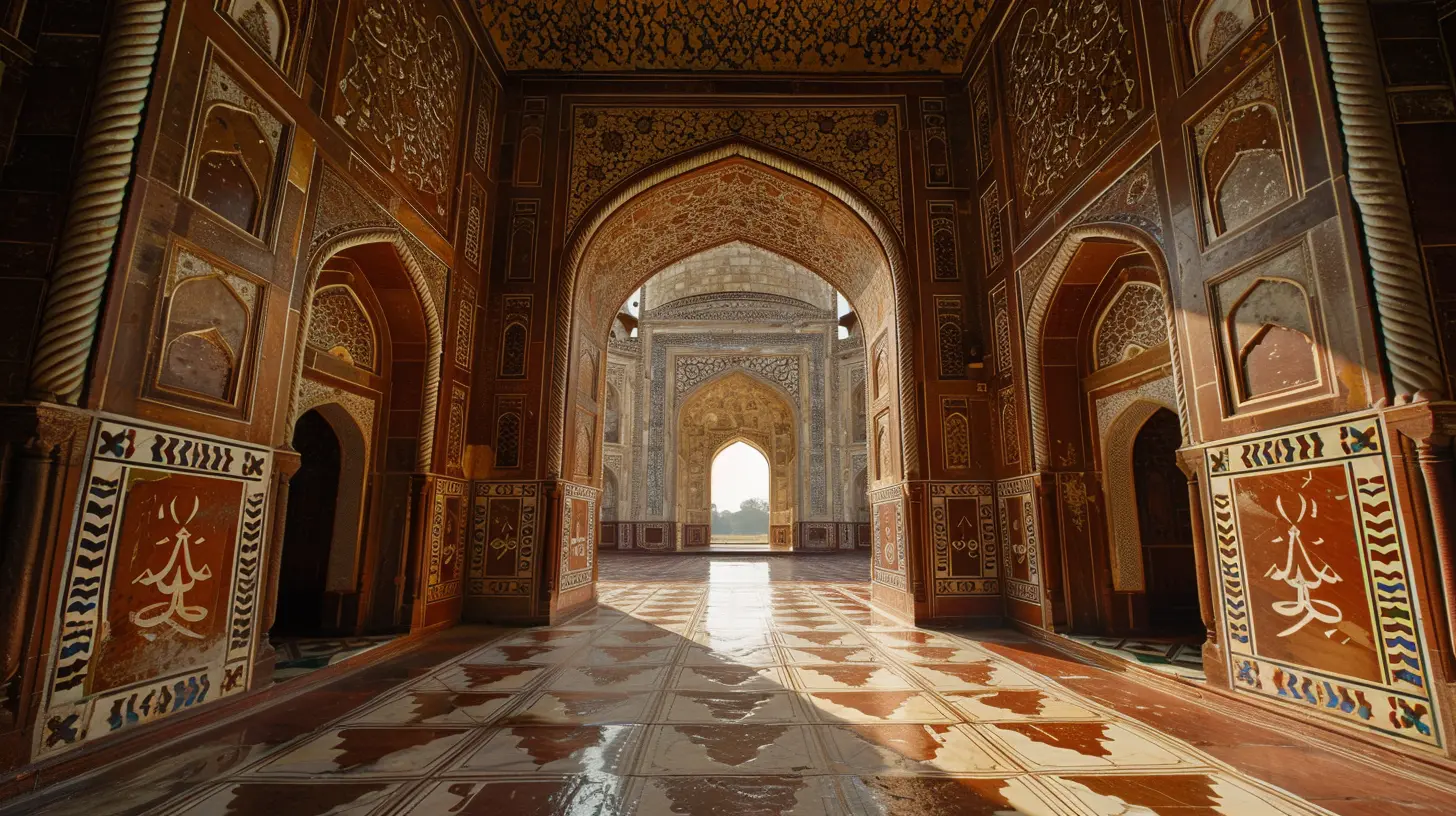
The Garden of Paradise
The Taj Mahal doesn't just exist in isolation; it is complemented by an extensive Persian-style garden, often referred to as the ‘Charbagh’ layout. Divided into four quadrants, the garden symbolizes paradise and the rivers of heaven—water, milk, honey, and wine. You can almost feel the calmness sweep over you as you stroll through the perfectly manicured lawns, with symmetrical water channels reflecting the grandeur of the Taj itself.Speaking of reflections, here’s a hot tip: The best spot for that perfect Instagram-worthy photo is right at the center of the garden, where the reflecting pool offers an iconic mirror image of the Taj Mahal. It's as though the Taj is rising out of the water, almost surreal in its perfection.
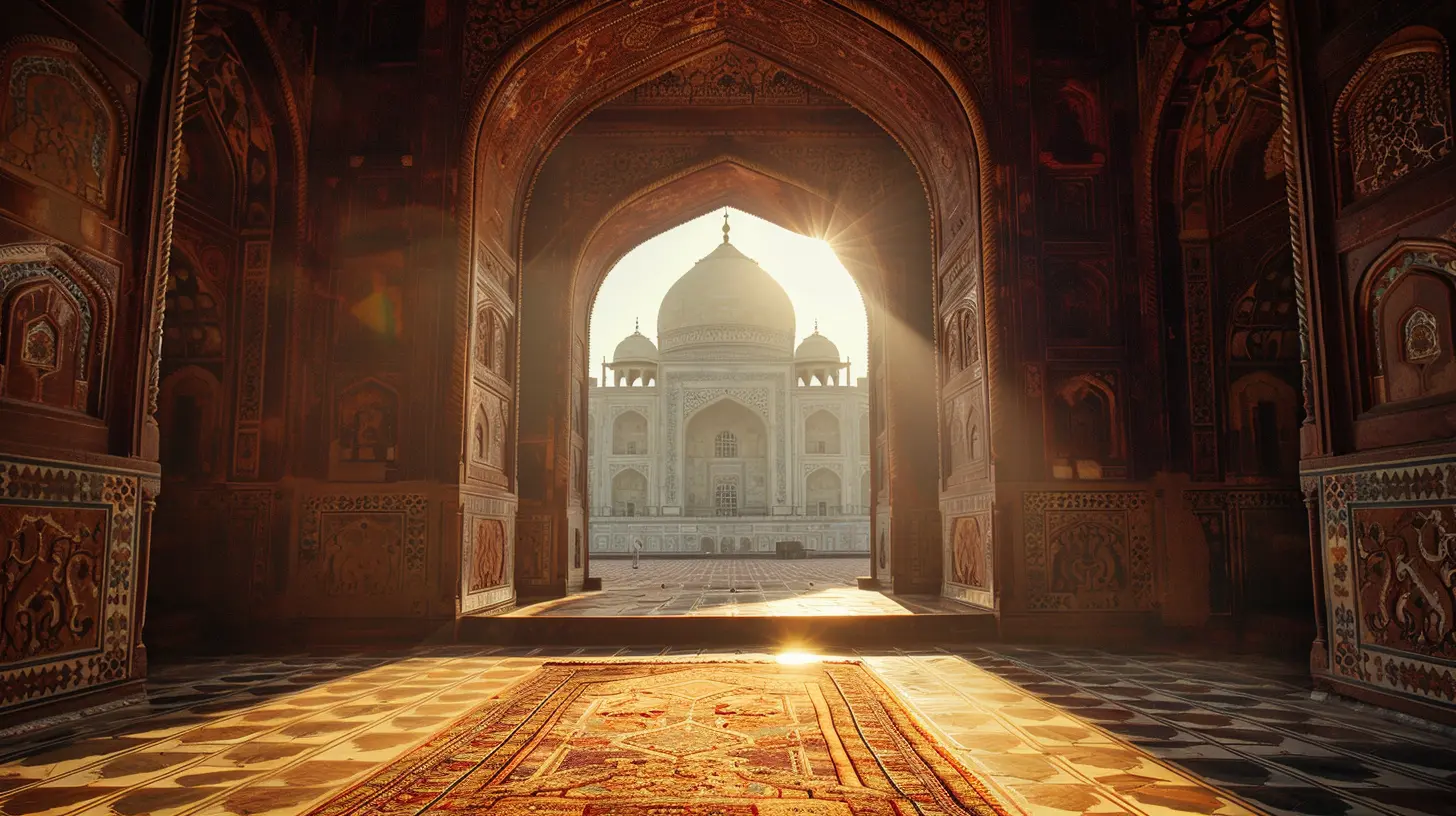
The Symbolism Behind the Beauty
There’s more to the Taj Mahal than just aesthetic perfection. Every inch of the structure is soaked in symbolism. The four minarets, for example, aren't just there for show—they were built at a slight outward angle. That way, in case of an earthquake, they would fall away from the main tomb, protecting it from any damage. Genius, right?The dome, meanwhile, represents the vault of heaven, while the entire complex is geometrically aligned in accordance with traditional Islamic principles of symmetry and balance. The whole site was crafted to represent the idea of an eternal paradise—an earthly representation of the afterlife that Shah Jahan envisioned for Mumtaz Mahal.
The Heartbreak and Legacy of Shah Jahan
As romantic as the story of the Taj Mahal is, it has a bittersweet ending. After its completion, Shah Jahan did not enjoy his creation for long. His son, Aurangzeb, overthrew him and imprisoned him in the nearby Agra Fort. Legend has it that from his cell, Shah Jahan had a distant view of his beloved Taj Mahal, and he spent the remainder of his life gazing longingly at it.Upon Shah Jahan's death in 1666, he was laid to rest next to Mumtaz Mahal—a fitting end to their love story. Together, in life and death, they remain side by side within the walls of the awe-inspiring monument.
Reasons to Visit the Taj Mahal
So, why should the Taj Mahal top your bucket list? There are plenty of reasons besides its jaw-dropping beauty and poignant history.1. Universal Appeal
The Taj Mahal truly transcends boundaries. Whether you’re an architecture enthusiast, a history buff, a hopeless romantic, or even just looking for the perfect travel shot, the Taj Mahal offers something for everyone.2. Cultural Immersion
When visiting the Taj Mahal, you’re not just visiting a building; you’re stepping into the heart of India's rich cultural tapestry. From the bustling streets of Agra to the traditional craftsmanship showcased in the Taj’s intricate design, there’s a palpable sense of history all around you.3. Cool Traveler Fact
Here's a fun fact to share with your fellow travelers: The Taj Mahal is one of the New Seven Wonders of the World! Not to mention, it’s a UNESCO World Heritage Site. You’re literally stepping into a piece of Earth’s most prized heritage.4. Sunrise and Sunset Special
The Taj Mahal at sunrise and sunset is a spectacle you don’t want to miss. As the sun climbs or descends, the light plays tricks on the marble, painting it in hues of rose, gold, and blue. When standing there as day turns into night, you’ll understand why people describe the Taj Mahal as otherworldly.5. A Photographer's Dream
Whether you're a seasoned photographer or just armed with your smartphone, the Taj Mahal offers endless photo opportunities. Its symmetrical beauty, reflective pools, and changing colors at different times of day make it one of the most photogenic spots on the planet.Traveler Tips: How to Make the Most of Your Visit
Alright, let’s talk logistics. If you’re planning to visit the Taj, here are some quick tips to help you make the most of the experience:1. Best Time to Visit
The best times to visit the Taj Mahal are during the cooler months—from October to February. Agra can get quite hot during the summer, and trust me, you don’t want to be sweating buckets while marveling at the Taj.2. Avoid Crowds
The early bird gets the worm, as they say... or in this case, the best view with fewer crowds. Arrive at sunrise for a more peaceful experience. Plus, the soft morning light makes the Taj look like something out of a dream.3. Shoes Off, Please!
Before you step onto the marble platform, you’ll be asked to remove your shoes or wear shoe covers—this helps preserve the monument. It’s a small price to pay to witness such beauty up close!4. Night Viewing
Did you know you can visit the Taj Mahal at night? On full moon nights and two days before and after, you can book a special night-viewing ticket to see the Taj bathed in moonlight. It's an experience unlike any other—like watching a dream unfold right before your eyes.In Conclusion: Why the Taj Mahal Resonates
The Taj Mahal isn’t just another tourist destination. It’s an emotional experience—a piece of history that still hums with life. As you stand in front of it, whether at sunrise, midday, or under a full moon, you’re reminded of the lengths humanity will go to in the name of love and remembrance. Its beauty is universally acknowledged, yet its emotional depth is something you can only truly feel when you’re standing right there, among the whispers of the past.If you haven’t yet visited the Taj Mahal, what are you waiting for? It’s not just a monument—it’s a story, a legend, and perhaps most importantly, it’s a reminder that love has the power to create beauty that stands the test of time.

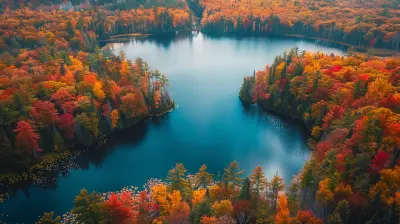




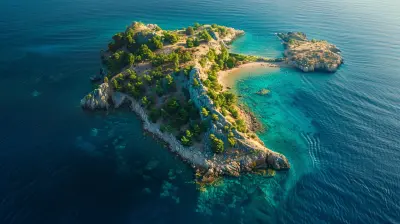

Cash McGrath
Love, marble, and magic await!
April 3, 2025 at 3:57 AM